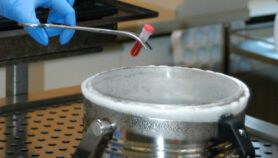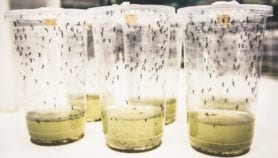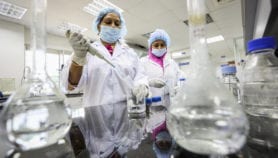By: T.V. Padma
Send to a friend
The details you provide on this page will not be used to send unsolicited email, and will not be sold to a 3rd party. See privacy policy.
[NEW DELHI] Open source biotechnology, through which biotechnology inventions are made freely available for others to use and improve upon, could help developing countries overcome hurdles created by stringent intellectual property rights (IPRs), a study says.
The concept is based on open source in software development. To date, open source software’s free accessibility, low cost, openness to modification and customisation, and availability of community support have helped it solve practical problems in agriculture, education, environment and health in developing countries.
Now a team from the UN University, in Tokyo, Japan, is suggesting that a similar approach in biotechnology could help break the IPR ‘logjam’ that is slowing down development and diffusion of agricultural technologies.
In a study published in the August issue of Technology in Society, the authors point out that private firms dominate research and development in agriculture biotechnology. Furthermore, they say, just three multinational firms account for about 80 per cent of biotech patents in the ‘cultivars’ (varieties selected intentionally through cultivation) category.
Multinationals also dominate the seed industry, and tend to focus on crops that reap profits, while ignoring the ‘orphan’ crops central to livelihoods in developing countries, authors say.
Agricultural biotechnology can potentially contribute to sustainable agriculture in developing countries, by helping to develop drought-, pest- and herbicide-resistant crops.
But strict IPR block the easy implementation of new innovations, the study says. IPR also blocks access to research tools for scientists, who have to worry if their work infringes on patents.
It cites examples demonstrating how IPR has made agricultural technologies inaccessible to communities in most need. This includes ‘golden rice’: rice genetically engineered to contain a gene for carotene — the building block for vitamin A.
Another constraint is the different sets of rules that govern different aspects of agricultural innovation, with different unions focusing on new varieties, seed producers, biodiversity and farmers’ rights, among others.
Open source biotechnology offers an alternative distribution model for agricultural innovations.
It seeks to overcome the ‘patents thicket’, by offering free research tools and technologies through open source licensing, and scope for cumulative improvements in technology and downstream transfer of open-source materials, the study says.
However, the study acknowledges several challenges to adopting open source biotechnology.
These include the need for training and for policies and infrastructures for supporting open source, and the high cost of IPR geared towards protecting farmers’ resources.
"The proposed open source biotechnology framework could be a good solution for sharing, exchanging and improving technologies for the public good," Sridhar Gutam, a senior scientist at the Central Institute of Subtropical Horticulture, in Lucknow, India, and convener of the ‘Open Access India’ movement, told SciDev.Net.
"When agriculture is a way of life, the data and information should be open access," Gutam said.
References
Technology in Society doi:10.1016/j.techsoc.2012.07.004 (2012)













